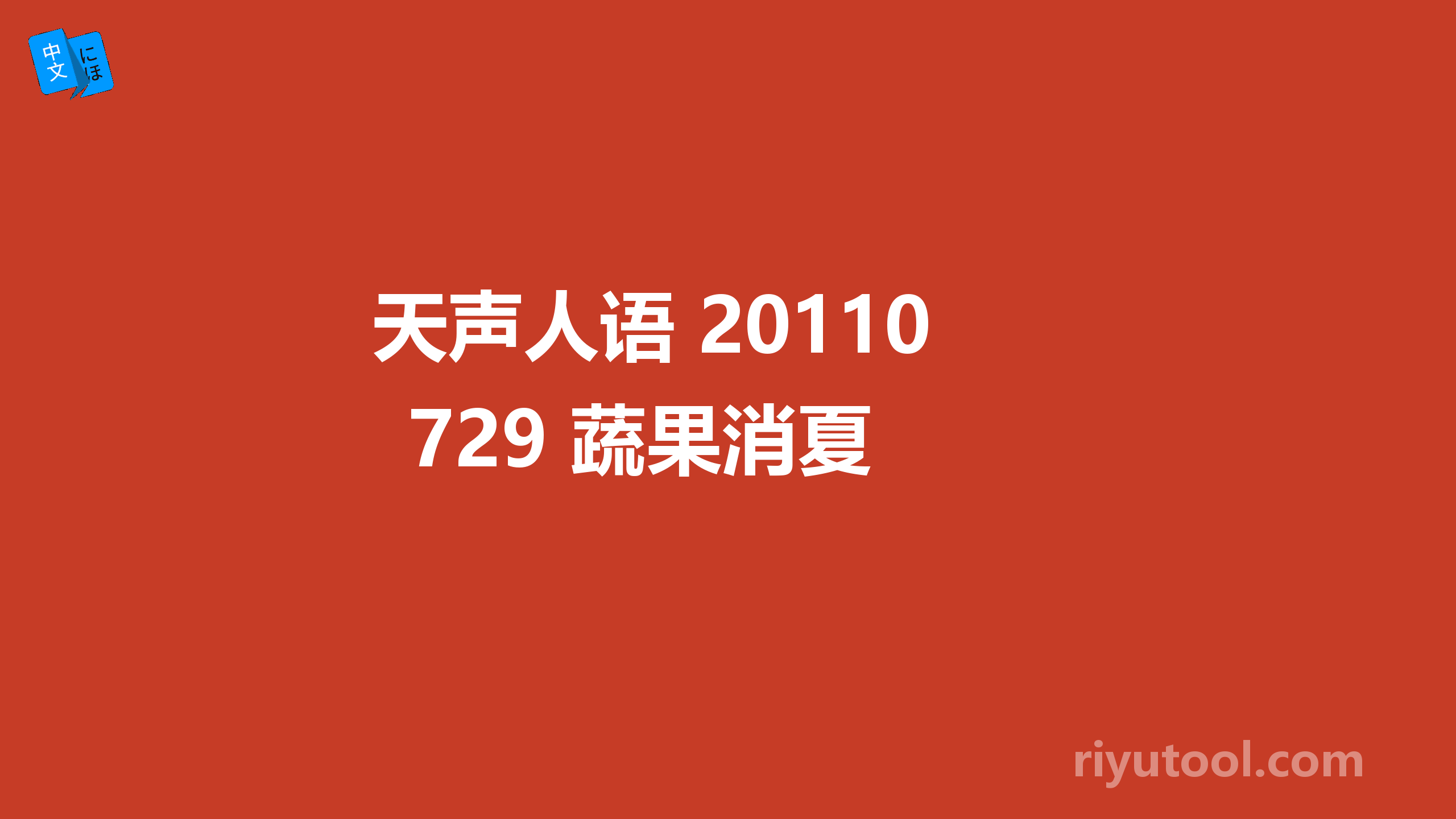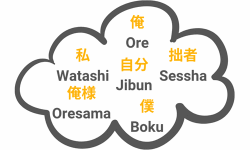天声人语 20110729 蔬果消夏
这篇看着能宽慰一下最近被国情摧残到死的心!▼近所の図書館へと続く道、ブロック塀に据えたプランターに小ぶりのナスが実っていた。艶(つや)やかな紫紺の肌は、夏空を映して涼しげだ。見た目ばかりか、多くの夏野菜には体を内側から冷やす力が宿るという。
去往附近图书馆的路上,偶然看到挂在灰坪外墙上的花盆里结出了小小的茄子,鲜亮饱满的深紫色茄子,映衬着盛夏晴空,带来了一丝凉意。不光看起来如此,据说很多夏季蔬菜都具有消暑去热的功效。
▼変化に富んだ国土はありがたく、津々浦々、夏には夏の郷土料理がある。山形の「だし」もその一つだ。キュウリにナス、ミョウガ、大葉、昆布あたりを細かく刻み、しょうゆなどで和(あ)えて飯や豆腐にかける。料理というより生ふりかけか。
日本各地各具风情,夏季都有各自代表性的地方料理。山形县的“dashi”就是其中之一,做法很简单,把黄瓜、茄子、日本生姜、大叶、海带都切成细丁,用少许酱油等调味料拌匀后,浇在米饭或者豆腐上。这道菜说起来其实更像是凉拌的浇头。
▼もともとは農繁期の簡便なおかずで、家庭ごと味が違うらしい。山形県出身の児童文学者、国分一太郎は「食べると、トントンと刻んでいる祖母や母を思い、故郷にへその緒がつながっている思いになる」と書いている。
这道菜本来是夏季农忙时期的简单菜肴,每家做出来的风味都各有不同。出生于山形县的儿童文学作家国分一太郎曾这样写道:“一吃这道菜,就更加思念起祖母和母亲,怀念起故乡来。”
▼自分で作ろうかとも思ったが、銀座の「おいしい山形プラザ」で出来合いを求め、夕食のご飯にまぶした。やや濃いめの味つけながら、かむほどに夏の香が弾(はじ)け、食欲がわく。おなかもひんやりした。
本想自己动手做这道菜的,后来还是在银座的“美味山形广场”店里买了现成的回来,浇在了晚餐的米饭上,调味可能稍重了一点,不过吃到嘴里越嚼越香,食欲大增,连肚内也觉得凉快了许多。
▼〈水桶(みずおけ)にうなづきあふや瓜茄子(うりなすび)〉蕪村。初会での意気投合を、戯れる野菜に例えた句だという。由来はともかく、涼感あふれる暑中の一景が目に浮かぶ。井戸水だろうか、放り込まれた冷水の中、ぷかぷかと挨拶(あいさつ)を交わす緑と紫が鮮やかだ。
俳句诗人与謝蕪村曾写过:“浸在水桶里的茄子们,频频点头打招呼”。据说这首俳句是用蔬菜来比喻一见如故的意气相投。到底如何成文不去管它,读过这句脑海中就会浮现出炎热夏季中清凉一景。把打上来的井水倒入桶中,鲜亮饱满的紫茄子和绿黄瓜在水桶里浮动颠簸,好像在互相打着招呼。
▼節電が季語の格をまとうこの夏、私たちに求められるのは、野菜ひとつに涼しさを覚える感性かもしれない。何代か前までの日本人に、あまねく備わっていた技である。網戸、泉、打ち水。探せば、五十音のそれぞれに涼が潜む。
今年夏季,节电一词也成了季节语,我们欠缺的可能就是对瓜果蔬菜各自清凉属性的那一份感性认识。这种感性的认识,是自古以来直至上一代日本人所普遍拥有的。纱窗门,泉水,洒水降温,用心寻找的话,日语单词的五十音图里处处都蕴藏着凉意。
VOX POPULI: Traditional seasonal foods offer relief from the heat
On my way to a neighborhood library, I noticed small eggplants growing in a planter on a cinder block wall. Their glossy dark purple skins reflected the summer sky. Summer vegetables are not only cool to the eye, many are said to actually cool human bodies from the inside.
We are blessed to be living in a country that offers a wonderful variety of local seasonal delicacies. For instance, "dashi" is a traditional summer specialty of Yamagata Prefecture. Made of finely chopped fresh cucumbers, eggplants, "myoga" ginger, "oba" Japanese basil and "konbu" seaweed, tossed together and seasoned with soy sauce, "dashi" is served as a topping on plain boiled rice or tofu.
The concoction originated as a simple side dish during summer, the busiest farming season. Every family is said to have its own recipe. Ichitaro Kokubun (1911-1985), a Yamagata Prefecture-born writer of childrens stories, once wrote: "Whenever I eat it, I remember my grandmother and mother chopping the vegetables rhythmically. The memory reminds me of the umbilical cord that still joins me to my hometown."
I thought of making it myself, but opted for a ready-made package I found at "Oishii Yamagata Plaza," a store in Tokyos Ginza district specializing in Yamagata specialties. I mixed it with my bowl of rice for supper. I wouldve preferred it less salty, but the "taste of summer" I savored with every bite worked up my appetite. My tummy felt pleasantly cool, too.
A haiku by Yosa Buson (1716-1784) goes: "In a pail/ Melons and eggplants/ Nod to one another." The vegetables are said to represent strangers hitting it off on their first meeting. Whether or not this interpretation is correct, the poem does depict a refreshingly cool scene in the heat of summer. I can readily visualize the vivid green of the melons and the purple of the eggplants, bobbing in cold water--perhaps from well water--as if exchanging greetings.
In this summer of energy conservation, perhaps we need the sensitivity to find coolness in even just one vegetable. This was a trick all Japanese knew and practiced until several generations ago. If we search, there are still lots of things that can keep us cool--screen doors, natural springs, the old custom of sprinkling water on the ground, and so on.
--The Asahi Shimbun, July 29





